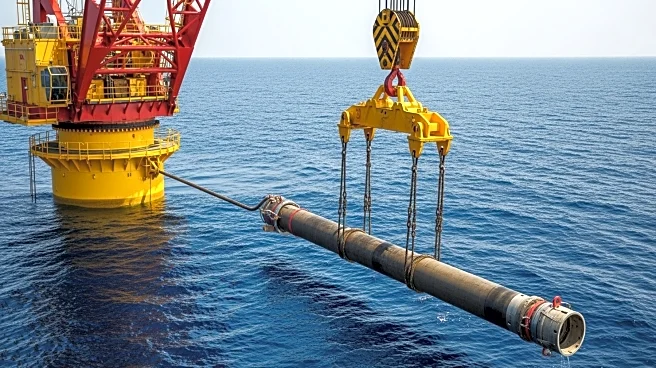What's Happening?
The Energy Workforce & Technology Council (EWTC) has introduced its Well Stimulation Surface Operations Industry Guidelines. These guidelines, developed by the EWTC Well Stimulation Committee, aim to provide operators and service providers with best practices for identifying hazards, managing risks, and executing surface operations during fracture stimulation. The guidelines are designed to improve safety, minimize risks, and enhance communication at well sites. They are intended for use by EWTC members and exploration and production companies across the sector. Ron Gusek, EWTC Vice Chair and CEO of Liberty Energy, emphasized the importance of safe and efficient operations in the industry, highlighting the collaborative effort behind the guidelines. Steven W. Anderson, Chair of the EWTC Well Stimulation Committee, noted that the guidelines reflect current operational realities and offer practical tools for both new and established operators.
Why It's Important?
The release of these guidelines is significant for the energy sector as it underscores the industry's commitment to safety and operational excellence. By providing a standardized approach to well stimulation operations, the guidelines aim to reduce the risk of accidents and improve the overall efficiency of operations. This can lead to cost savings and increased productivity for companies involved in well stimulation. Additionally, the guidelines serve as a benchmark for operators working with service providers, promoting consistency and reliability in operations. The focus on safety and risk management is crucial in maintaining the industry's license to operate and ensuring the protection of workers and the environment.
What's Next?
The guidelines are now available to EWTC members and other interested parties looking to align their operations with industry best practices. Companies in the sector are encouraged to adopt these guidelines to enhance their operational standards. As the industry continues to evolve, further updates and refinements to the guidelines may be expected to address new challenges and technological advancements. Stakeholders, including operators and service providers, will likely assess the impact of these guidelines on their operations and make necessary adjustments to comply with the recommended practices.
Beyond the Headlines
The introduction of these guidelines may also influence regulatory frameworks and industry standards, as they provide a comprehensive approach to managing well stimulation operations. The emphasis on safety and risk management could lead to increased scrutiny from regulatory bodies, prompting companies to adopt more rigorous safety protocols. Additionally, the guidelines may foster greater collaboration and knowledge sharing among industry players, contributing to the overall advancement of the sector.












